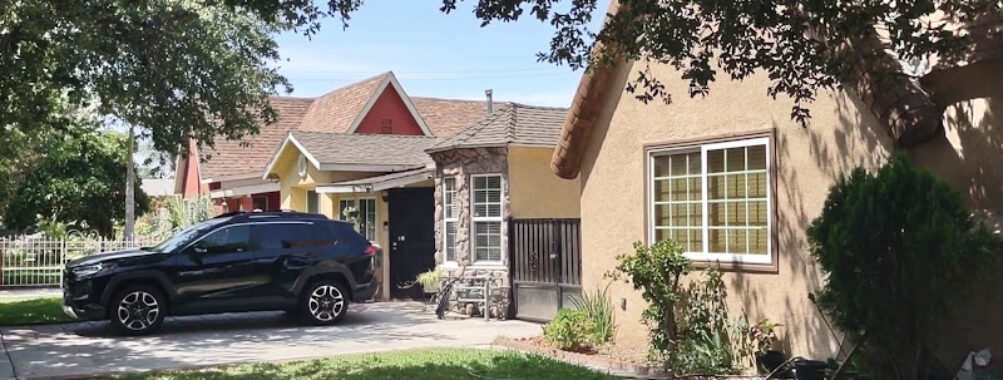
The Castrum’s South Gate
Table of Contents
Location
Places to Stay Near The Castrum's South Gate"Make sure you visit the Catholic as well as the Orthodox church and ..."
Find and Book a Tour
Explore More Travel Guides
No reviews found! Be the first to review!
Description
If you ever find yourself exploring the diverse and culturally rich region of Los Angeles County, one destination that surprisingly stands out is South Gate, California – a compact yet intriguing city just 7 miles southeast of Downtown Los Angeles. During my recent trip, I discovered that South Gate offers more than the typical urban sprawl narrative; it has a distinct personality rooted in the history of the Gateway Cities region. As you wander its 7.4 square mile area, you’ll notice that the blend of modern life with old-world charm creates a setting that is both inviting and thought-provoking. In particular, one of the most interesting aspects of the area is what many locals call “The Castrum’s South Gate.” Its name hints at a historic legacy, inviting visitors to delve deeper into its cultural tapestry and community spaces.
What makes South Gate so memorable for travelers is its eclectic mix of sites and experiences that range from architectural marvels to places of worship steeped in tradition. I was especially intrigued by the opportunity to visit both a Catholic church and an Orthodox church during my stay. Each of these sacred spaces tells its own story through magnificent stained-glass windows, intricate iconography, and solemn yet heartfelt congregational practices. The Catholic church radiated a sense of calm and intimacy in its artwork and traditions, while its Orthodox counterpart captivated me with its layered history and vibrant interior designs. It’s refreshing to see how these two distinct institutions coexist, offering diverse narratives of faith and community life.
The city itself may be modest in size, but every corner you turn offers a glimpse into the everyday life of Southern Californians. Whether you’re here for a casual day trip or a more in-depth exploration, the distinctive local architecture, family-run eateries, and even the street art adorning many of the city’s quieter lanes make you feel like you’re part of an ongoing narrative. The atmosphere is relaxed yet deliberately engaging, and there’s a palpable sense of authenticity in every encounter. Perhaps the true beauty of South Gate lies in its ability to merge the past with the present, allowing you to seamlessly follow in the footsteps of those who shaped the region’s history while enjoying modern comforts and conveniences.
Beyond the religious landmarks, South Gate is also home to several community parks, local markets, and vibrant family celebrations that reflect the cultural diversity of the area. As you move deeper into the city, you might notice how each neighborhood holds its own unique traditions—sometimes influenced by the powerful legacy of its immigrant communities and other times defined by the modern pulse of urban development. The juxtaposition of these elements offers travelers a comprehensive look at how a small city can harbor a rich and multifaceted identity, making every visit a learning experience as much as it is a leisure trip.
Key Features
- Architectural Diversity: From the modern designs of community centers to the historical artistry of both the Catholic and Orthodox churches, South Gate is a delightful blend of old and new.
- The Castrum’s Legacy: Delve into the historic roots behind “The Castrum’s South Gate,” an emblematic site that hints at the region’s storied past.
- Dual Religious Heritage: With both a Catholic and an Orthodox church in close proximity, you can appreciate the architectural, cultural, and spiritual differences between two major Christian traditions.
- Cultural Festivals: The area frequently plays host to local fairs, food festivals, and community gatherings that highlight local art, music, and culinary delights.
- Local Dining and Cafés: Enjoy diverse culinary experiences ranging from traditional dishes to innovative fusion recipes, all set in cozy, welcoming venues throughout the city.
- Community Parks and Outdoor Spaces: Relax in well-maintained parks and green spaces that serve as social hubs and offer a moment of respite from the bustling urban landscape.
- Close Proximity to Downtown Los Angeles: Just a short drive from Downtown LA, South Gate offers a quiet retreat with easy access to the energy and attractions of a major metropolis.
- Local Art and Murals: Stroll along streets adorned with public art that reflects the city’s cultural and historical narratives, providing fantastic photo opportunities.
Best Time to Visit
Visiting South Gate at different times of the year can provide varied experiences, but I found that a visit during the spring or fall is particularly rewarding. When the weather is pleasantly warm but not stifling, the city’s outdoor spaces, community events, and architectural highlights seem to shine even brighter. The late afternoon hours, in particular, are ideal if you want to capture the soft, diffuse lighting that enhances the vibrant colors of the religious monuments and mural-covered streets.
In my experience, spring brings a refreshing burst of energy—flowers start to bloom in community parks, and the local markets become lively with seasonal produce and artisanal crafts. Meanwhile, fall offers a more introspective pace; crisp evenings and mellow sunlight create a perfect backdrop for reflective walks around historic neighborhoods. During these seasons, I noticed that the local cafés feature seasonal menus and the streets are quieter, allowing for a more intimate exploration of the sights.
Summer in South Gate can also be enjoyable, especially if you’re up for outdoor dining and evening community festivities. However, be prepared for warmer temperatures and consider scheduling your outdoor excursions for early mornings or later in the evenings to